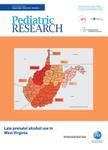版权所有:内蒙古大学图书馆 技术提供:维普资讯• 智图
内蒙古自治区呼和浩特市赛罕区大学西街235号 邮编: 010021

作者机构:Alberta Childrens Prov Gen Hosp Dept Med Genet Calgary AB T2T 5C7 Canada Alberta Childrens Prov Gen Hosp Dept Oncol Calgary AB T2T 5C7 Canada Alberta Childrens Prov Gen Hosp Dept Pediat Calgary AB T2T 5C7 Canada Univ Calgary Calgary AB T2T 5C7 Canada
出 版 物:《PEDIATRIC RESEARCH》 (儿科研究)
年 卷 期:2000年第48卷第2期
页 面:227-232页
核心收录:
学科分类:1002[医学-临床医学] 100202[医学-儿科学] 10[医学]
主 题:肾上腺皮质激素类/治疗应用 骨髓/病理学 骨髓移植 染色体图 染色体 人 10对 染色体 人 14对 染色体 人 19对 染色体 人 9对 环孢菌素/治疗应用 遗传标记 组织细胞增多症 非郎格尔汉斯细胞/遗传学 组织细胞增多症 非郎格尔汉斯细胞/病理学 组织细胞增多症 非郎格尔汉斯细胞/治疗 甲氨蝶呤/治疗应用 新斯科舍 系谱 青少年 儿童 女(雌)性 人类 男(雄)性
摘 要:Familial hemophagocytic lymphohistiocytosis (FKLH;MIM #267700) is an autosomal recessive disorder of immune regulation characterized by fever, hepatosplenomegaly, and cytopenia that is fatal without bone marrow transplantation. Recent studies have suggested the existence of FHLH loci at 9q21.3-22 and 10q21-22 in Asian and European/African/Australian families, respectively. We studied two unrelated Canadian families in which first cousins were affected with FHLH. In an effort to localize the causative gene, we completed a genome-wide screen for homozygosity by descent by using an automated system to genotype 400 highly polymorphic dinucleotide repeat markers covering the genome with an average resolution of 10 centiMorgans (cM). We identified a total of three candidate loci that met the combined criteria for homozygosity by descent in one family and shared maternal alleles in the other family. One of these, D9S1690, had a cytogenetic localization (9q22.33) proximal to a previously reported inversion of chromosome 9 in an FHLH patient. However, additional closely linked flanking markers within 1-2 cM of all three candidates did not conform to the criteria for linkage in either family. Similarly, we excluded the linked 9q21.3-q22 and 10q21-22 regions recently reported in Asian and European/African/Australian families, respectively. The two families were then analyzed independently to encompass the possibility that they were segregating separate genes. Six additional candidate loci were identified on the basis of homozygosity for the same allele in all affected members of one family, but further analysis of closely linked flanking markers did not demonstrate similar homozygosity. Our data provide further evidence of genetic heterogeneity in FHLH and suggest the existence of at least a third locus for this disease.